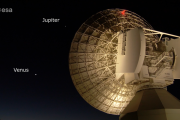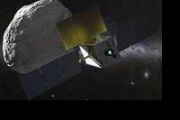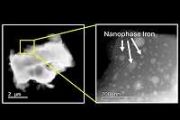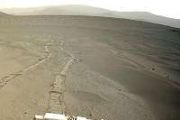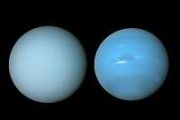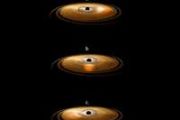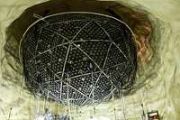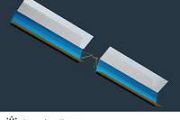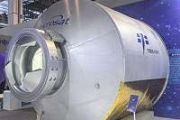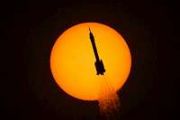
Copernical Team
How to Master Terraria: Essential Tips from a Pro Player
 Playing Terraria on Master Mode can be brutal. A single hit from a slime could kill you if you're not wearing armor. The game gets much harder at higher difficulty levels, and you'll need solid preparation and strategy.
Playing Terraria on Master Mode can be brutal. A single hit from a slime could kill you if you're not wearing armor. The game gets much harder at higher difficulty levels, and you'll need solid preparation and strategy. SpaceX launches 28 Starlink satellites days after service outage
 SpaceX early Saturday launched another 28 Starlink satellites into low-Earth orbit from Florida, days after a short service outage hit the space-based internet provider.
The Falcon 9 lifted off at 5:01 a.m. EDT from Cape Canaveral Space Force Station's Pad 40.
The first-stage booster launched for the 22nd time, including Crew-6 and 17 previous Starlink missions.
About 8 mi
SpaceX early Saturday launched another 28 Starlink satellites into low-Earth orbit from Florida, days after a short service outage hit the space-based internet provider.
The Falcon 9 lifted off at 5:01 a.m. EDT from Cape Canaveral Space Force Station's Pad 40.
The first-stage booster launched for the 22nd time, including Crew-6 and 17 previous Starlink missions.
About 8 mi Vega C launch deploys Earth observation and climate monitoring satellites
 Vega C has completed its VV27 mission, successfully delivering the CO3D and MicroCarb satellites into their respective orbits. Liftoff occurred at 23:03 local time on July 25 (04:03 CEST on July 26), powered by the P120C solid rocket motor which fired for 2 minutes and 23 seconds. The launch sequence continued with ignitions of the Zefiro 40 and Zefiro 9 stages.
The AVUM+ upper stage execu
Vega C has completed its VV27 mission, successfully delivering the CO3D and MicroCarb satellites into their respective orbits. Liftoff occurred at 23:03 local time on July 25 (04:03 CEST on July 26), powered by the P120C solid rocket motor which fired for 2 minutes and 23 seconds. The launch sequence continued with ignitions of the Zefiro 40 and Zefiro 9 stages.
The AVUM+ upper stage execu Cascade raises 59M to develop full stack satellite communications platform
 Cascade Space has secured $5.9 million in seed funding to advance its development of a comprehensive satellite communication platform. The round saw investment from Nova Threshold, Undeterred Capital, Y Combinator, Night Capital, Olive Capital, Valkyrie Ventures, Karman Ventures, Palm Drive Capital, Garage Capital, TRAC, Aurelia Foundry, Hawktail, MGV.VC, Pioneer Fund, Liquid 2 Ventures, and oth
Cascade Space has secured $5.9 million in seed funding to advance its development of a comprehensive satellite communication platform. The round saw investment from Nova Threshold, Undeterred Capital, Y Combinator, Night Capital, Olive Capital, Valkyrie Ventures, Karman Ventures, Palm Drive Capital, Garage Capital, TRAC, Aurelia Foundry, Hawktail, MGV.VC, Pioneer Fund, Liquid 2 Ventures, and oth Robotic space rovers keep getting stuck
 When a multimillion-dollar extraterrestrial vehicle gets stuck in soft sand or gravel - as did the Mars rover Spirit in 2009 - Earth-based engineers take over like a virtual tow truck, issuing a series of commands that move its wheels or reverse its course in a delicate, time-consuming effort to free it and continue its exploratory mission.
While Spirit remained permanently stuck, in the
When a multimillion-dollar extraterrestrial vehicle gets stuck in soft sand or gravel - as did the Mars rover Spirit in 2009 - Earth-based engineers take over like a virtual tow truck, issuing a series of commands that move its wheels or reverse its course in a delicate, time-consuming effort to free it and continue its exploratory mission.
While Spirit remained permanently stuck, in the AST SpaceMobile launches $500 million convertible note offering with share repurchase initiative
 AST SpaceMobile has announced a $500 million private offering of convertible senior notes due 2032, with an effective conversion price of $72.07 per share and capped at $120.12 per share. These 2.375% notes were priced at a 20% premium to the company's stock price as of July 24, 2025. Settlement of the offering is expected by July 29, subject to standard closing conditions.
As part of the
AST SpaceMobile has announced a $500 million private offering of convertible senior notes due 2032, with an effective conversion price of $72.07 per share and capped at $120.12 per share. These 2.375% notes were priced at a 20% premium to the company's stock price as of July 24, 2025. Settlement of the offering is expected by July 29, subject to standard closing conditions.
As part of the Sidus Space unveils plan to raise capital through public stock offering
 Sidus Space, a provider of space and defense technologies, announced plans to conduct a best-efforts public offering of its Class A common stock or pre-funded warrants. The company will sell all shares or warrants issued through the offering.
ThinkEquity will serve as the sole placement agent. Proceeds from the offering are expected to support sales and marketing initiatives, operational c
Sidus Space, a provider of space and defense technologies, announced plans to conduct a best-efforts public offering of its Class A common stock or pre-funded warrants. The company will sell all shares or warrants issued through the offering.
ThinkEquity will serve as the sole placement agent. Proceeds from the offering are expected to support sales and marketing initiatives, operational c Millennium Space Systems initiates on-orbit operations for NASA space weather study
 Millennium Space Systems, a Boeing Company, has started the on-orbit commissioning phase for NASA's Tandem Reconnection and Cusp Electrodynamics Reconnaissance Satellites (TRACERS) following their successful launch on July 23.
The company designed, built, and tested the two identical TRACERS spacecraft at its El Segundo facility and is now managing mission operations from its internal Miss
Millennium Space Systems, a Boeing Company, has started the on-orbit commissioning phase for NASA's Tandem Reconnection and Cusp Electrodynamics Reconnaissance Satellites (TRACERS) following their successful launch on July 23.
The company designed, built, and tested the two identical TRACERS spacecraft at its El Segundo facility and is now managing mission operations from its internal Miss BAE Systems completes delivery of NOAA and NASA space weather satellites for fall launch
 BAE Systems has completed the delivery of two advanced satellites from its Boulder, Colorado facility to NASA's Kennedy Space Center in Florida. The spacecraft-NASA's Carruthers Geocorona Observatory and NOAA's Space Weather Follow On - L1 (SWFO-L1)-are slated for joint launch this fall.
Developed to enhance scientific and forecasting capabilities, both missions will operate from Lagrange
BAE Systems has completed the delivery of two advanced satellites from its Boulder, Colorado facility to NASA's Kennedy Space Center in Florida. The spacecraft-NASA's Carruthers Geocorona Observatory and NOAA's Space Weather Follow On - L1 (SWFO-L1)-are slated for joint launch this fall.
Developed to enhance scientific and forecasting capabilities, both missions will operate from Lagrange Building blocks of life found in distant star system suggest origins in interstellar space
 Using the Atacama Large Millimeter/submillimeter Array (ALMA), a team led by Abubakar Fadul from the Max Planck Institute for Astronomy (MPIA) has detected 17 complex organic molecules in the protoplanetary disc of the protostar V883 Orionis. Among them are ethylene glycol and glycolonitrile-molecules regarded as precursors to amino acids and nucleobases-marking their first tentative detection i
Using the Atacama Large Millimeter/submillimeter Array (ALMA), a team led by Abubakar Fadul from the Max Planck Institute for Astronomy (MPIA) has detected 17 complex organic molecules in the protoplanetary disc of the protostar V883 Orionis. Among them are ethylene glycol and glycolonitrile-molecules regarded as precursors to amino acids and nucleobases-marking their first tentative detection i 











